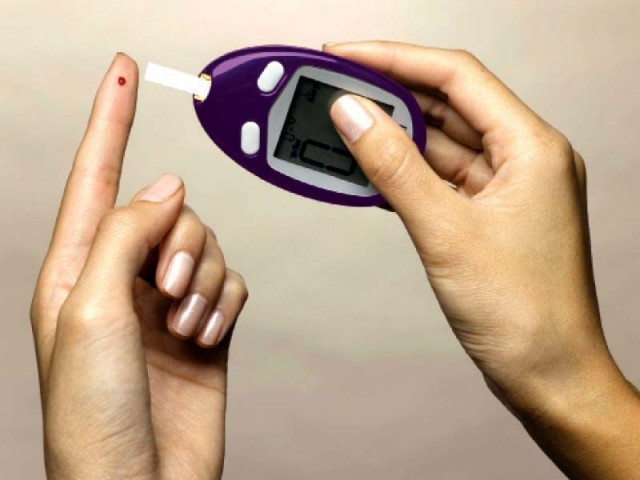The world prepares to paint itself blue in observation of the World Diabetes Day on November 14, 2013, which makes it a perfect time to discuss some of the bitter details of this condition.
Simply put, diabetes mellitus is about your body’s inability to regulate blood sugar level. This could happen in two ways: either your pancreas doesn’t make enough insulin, which is the hormone responsible for lowering blood sugar level (type I diabetes), or the body doesn’t respond as effectively to an otherwise normal level of insulin (type II diabetes).
The following are a few common misconceptions about diabetes that need to be cleared.
It’s a fat person’s disease
While the correlation between obesity and diabetes is undeniably clear, this disease cannot be thought of as a problem exclusively affecting fat people with sedentary lifestyles. Genetics and epigenetics play a major role as well. If you are a healthy young male with a strong family history of diabetes, you may still want to give that large serving of kheer a second thought.
Cricket legend, Wasim Akram, is possibly the farthest thing from a stereotypical diabetic patient one could picture. At the age of 31, this healthy, athletic male was diagnosed with diabetes. And ever since, he has presented himself to the world as cautionary tale – even a man, who is professionally required to remain physically fit, is not immune from this pandemic.
In fact, type I diabetes has very little to do with unhealthy lifestyle choices, and rears its head at an early age (hence its other name, ‘juvenile onset diabetes’).
Diet and exercise fix diabetes
Expanding on the point previously made, it should be recognised that diabetes is not merely a product of sloth and poor eating habits, but an actual disease. And like other chronic diseases, it requires long-term medication as prescribed by the doctor.
A diabetic patient needs to be counselled on the importance of regular physical exercise and dietary control in slowing the progress of this disease, but it is possible to have a high blood sugar level despite taking such measures. Poorly controlled blood sugar is not necessarily an indicator of a patient’s lack of commitment towards his own health.
Fruit is good for you
The general public holds fresh fruit in high esteem. Newly diagnosed diabetic patients are often confused when asked by doctors to avoid eating dates. It is customary for patients admitted in hospitals to receive fruit baskets and cartons of fruit juice. The presence of such foods on a diabetic patient’s bedside is likely to alarm any concerned doctor who walks by.
Most fruits are high in sugar, and even though they offer a cornucopia of vitamins and minerals that are imperative for healthy living, they are not fit for consumption by diabetic patients.
The glycemic index is a measure of the rapidity with which a food increases your blood sugar. Fruits with higher glycemic index, like grapes and bananas, should be avoided. Fruits with low glycemic index, like grapefruit, are better tolerated by diabetics. Be advised that watermelon and dates, despite their reputation as being benign and healthy, have some of the highest glycemic indices among fruits.
Eat as little as possible
Over-exuberant dietary restrictions may result in low blood sugar, which is just as much of a hazard for a diabetic patient as too much blood sugar, if not more. Fasting for long periods of time does the opposite of keeping you healthy.
The goal is to keep the sugar level within a Goldilocks range. This is best achieved by taking small, frequent meals, and regularly monitoring blood sugar.
It’s not that bad!
Diabetes doesn't seem too alarming to an external observer. The last time I checked, nobody at my workplace took a sick leave for “having a bad case of diabetes today”.
It’s a disease that slowly gnaws away at just about every body part you own. A tiny wound on one’s toe could expand to a life-threatening, gangrenous ulcer, if left unchecked. It is not diabetes itself that is the cause of death for the sufferers; the fatal blow comes from rampant infections or failure of organs brought on by the degeneration that uncontrolled diabetes catalyses.
In fact, it is precisely the slow, insidious nature of the disease that makes it so pernicious. If one falls from a tree, he’d rush to the hospital howling in pain. If one’s blood sugar is consistently high, he may never know until his organs have suffered irreversible damage.
It is a disease that requires constant care, surveillance and patience.
While much remains to be understood about this disorder, it is comforting to find the world waking up to the fact that this scourge is not to be taken lightly.
Five myths you probably believe about diabetes
Diet and exercise fix diabetes? Fruit is good for you? Time to clear up existing misunderstandings.



COMMENTS
Comments are moderated and generally will be posted if they are on-topic and not abusive.
For more information, please see our Comments FAQ